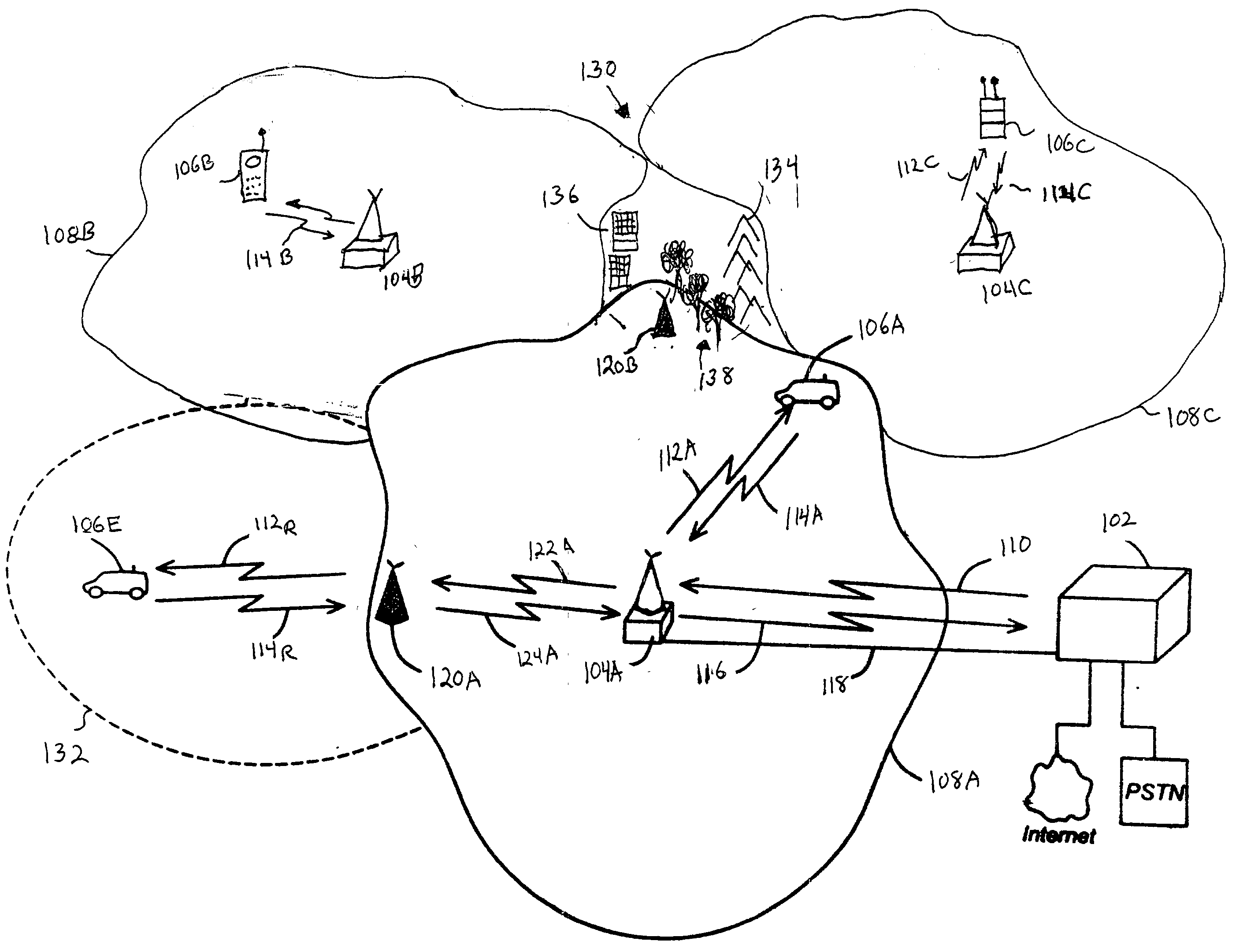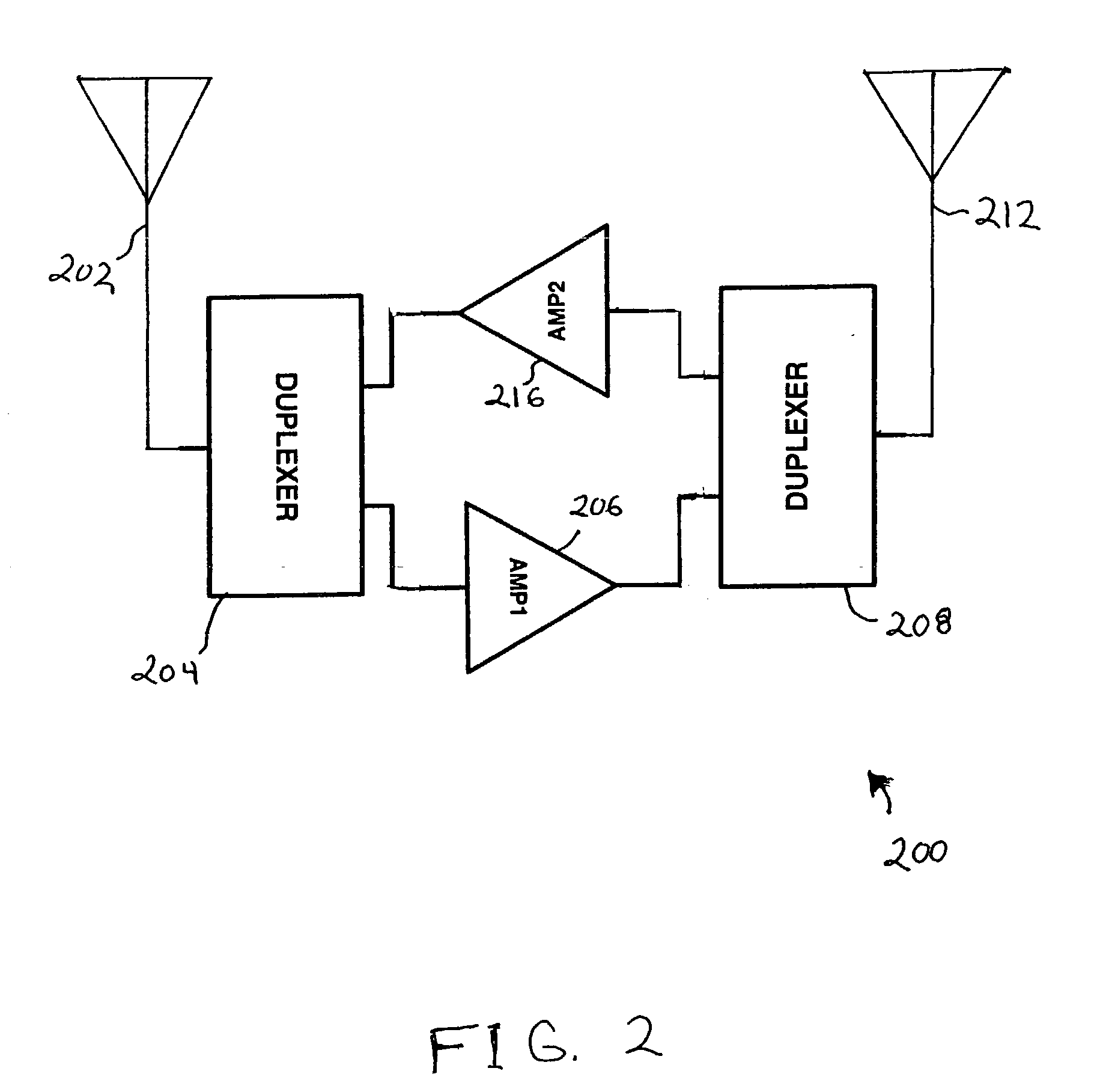Reverse link power controlled repeater
a power control and repeater technology, applied in power management, wireless commuication services, frequency-division multiplex, etc., can solve problems such as gaps or holes in coverage areas, and the inability of some base stations to reach certain areas, and achieve the effect of reducing the number of repeaters
- Summary
- Abstract
- Description
- Claims
- Application Information
AI Technical Summary
Benefits of technology
Problems solved by technology
Method used
Image
Examples
Embodiment Construction
[0038] I. Introduction
[0039] The present invention is a method and apparatus for controlling the gain and the transmission power of a repeater used in a wireless communication system by embedding a wireless communication device circuit within the repeater. The wireless communication device is power controlled or adjusted by base stations with which it communicates over a communication link held in common with repeater return link communication signals. One or more signals or commands generated by the wireless device interact with the repeater to cause the repeater to be gain and thus power controlled. As would be apparent to one skilled in the relevant art, the concept of the present invention can be applied to many types of communications systems where power control is used and there is a desire to reduce signal interference or degradation.
[0040] Embodiments of the invention are discussed in detail below. While specific steps, configurations and arrangements are discussed, it shoul...
PUM
 Login to View More
Login to View More Abstract
Description
Claims
Application Information
 Login to View More
Login to View More - R&D
- Intellectual Property
- Life Sciences
- Materials
- Tech Scout
- Unparalleled Data Quality
- Higher Quality Content
- 60% Fewer Hallucinations
Browse by: Latest US Patents, China's latest patents, Technical Efficacy Thesaurus, Application Domain, Technology Topic, Popular Technical Reports.
© 2025 PatSnap. All rights reserved.Legal|Privacy policy|Modern Slavery Act Transparency Statement|Sitemap|About US| Contact US: help@patsnap.com



